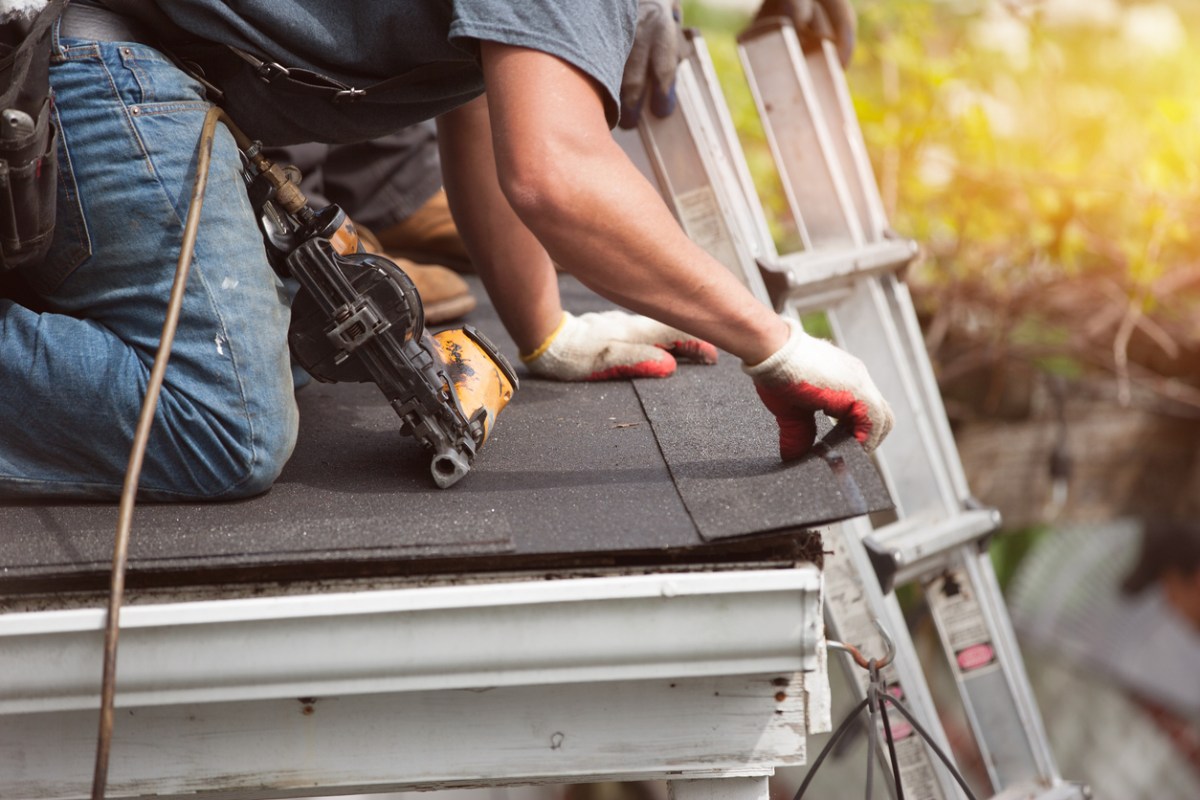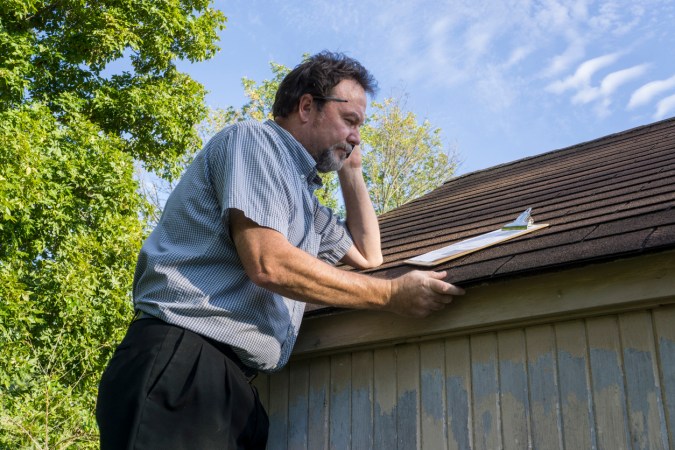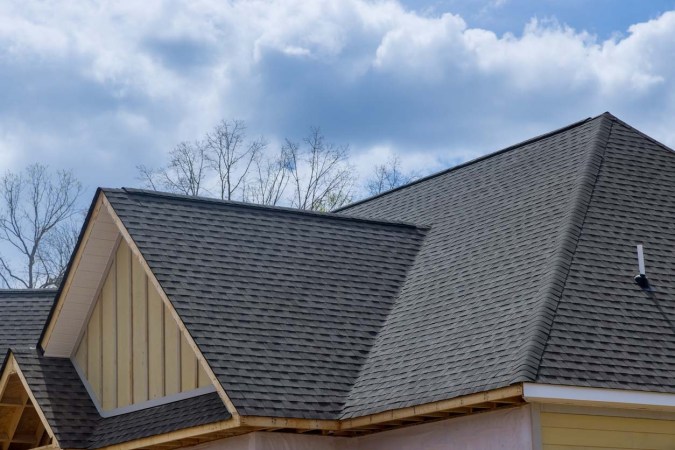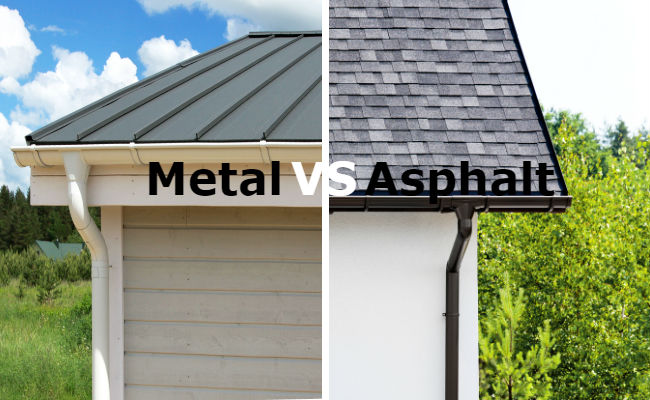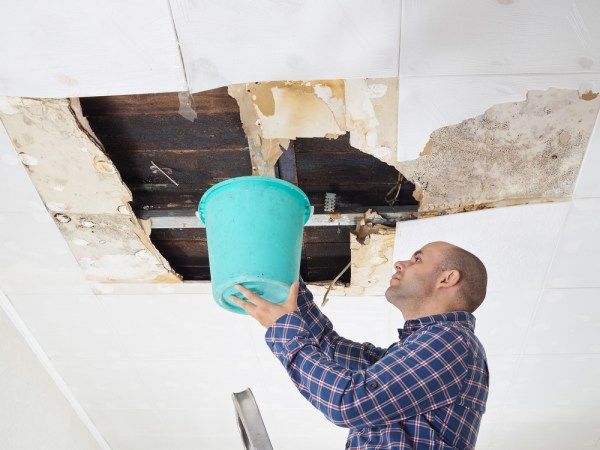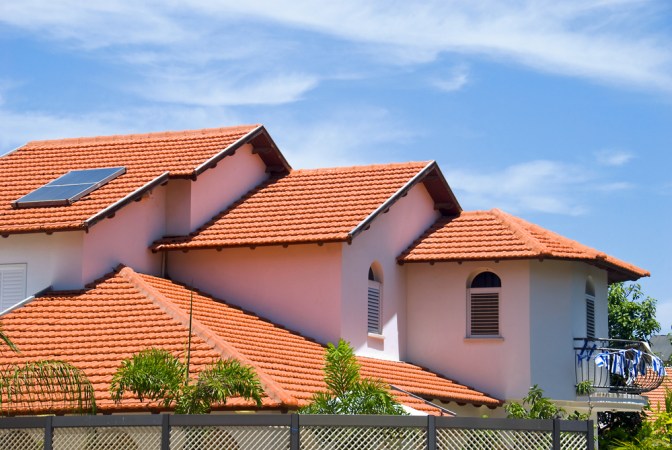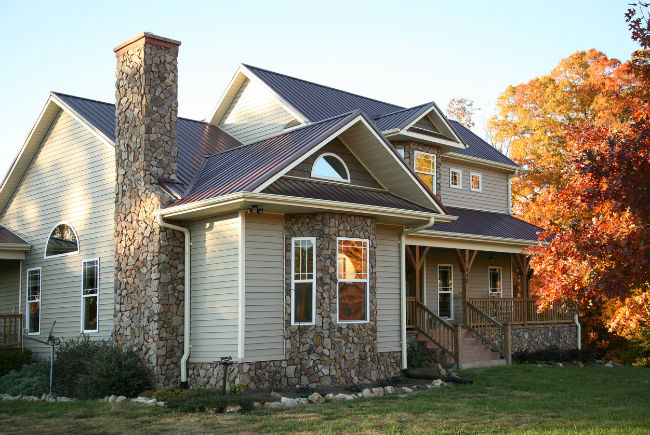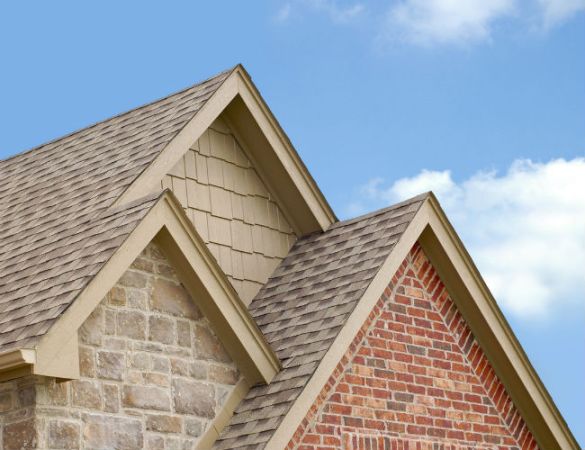We may earn revenue from the products available on this page and participate in affiliate programs. Learn More ›
Q: We just had a hailstorm come through, and unfortunately, our roof sustained a bit of damage. The damage definitely needs to be repaired, but the roof is on the older side and I’m wondering if this would be a good time to have it replaced altogether. How do I decide between roof repair or replacement?
A: Depending on just how old the “older side” is, replacement may be a more beneficial route if the roof is continually causing problems. However, a nick here or a torn shingle there doesn’t necessitate a complete roof replacement. The age of the roof is a major factor, as is the nature of the damage and what is affordable. When considering roof repair or replacement, there are a number of factors that can help homeowners determine which route makes to most sense to keep the home protected.
A roof’s age is a primary factor in determining whether it needs to be repaired or replaced. Roofs become more damage-prone with age, so it may be more cost-effective to replace a roof that is over 10 years old than to continue paying for frequent repairs.
Unlike fine wine, roofs do not get better with age, which is why replacement may be a better option than repair if the roof is creeping into an age in the double digits. Asphalt shingle roofs in particular last about 15 to 20 years before they need to be replaced, which is important to keep in mind if the roof is made out of asphalt and is approaching that milestone. The older the roof gets, the more likely it is that repairs will be necessary, and these expenses can add up over time. Roof repair costs can range from $379 to $1,758 depending on the extent of the damage, the type of roof, and the kinds of roofing repair materials that are needed. Although those figures are significantly less than the cost of a new roof, it may make more sense to go with a replacement to avoid the cost of repetitive roof repairs.
Minor damage that only affects a few square feet of the roof, such as slipped shingles, can likely be repaired, whereas widespread or severe damage may warrant a full roof replacement.
Because roofs are constantly exposed to the elements, it’s not uncommon for some minor repairs to be needed at some point during a roof’s lifetime. If flashing starts to come loose in a couple of places or a shingle is blown off, a roofer can take care of these problems with relative ease. Sometimes a roof can look rough around the edges but is actually in decent shape. This is referred to as aesthetic damage, and it can be addressed with smaller repairs. Some examples of aesthetic damage include:
- Fading
- Moss
- Dark streaks
- Algae growth
If moss or discoloration is the extent of the problem, one of the top roof cleaning services can pressure-wash the roof so it looks as good as new. Structural damage, on the other hand, is much more dangerous and could compromise the safety of the home. Issues such as missing granules, bald spots, rusted shingles or panels, cracked or broken roofing components, and curled or cupped edges are structural. If they’re severe, an entire roof replacement may be necessary.
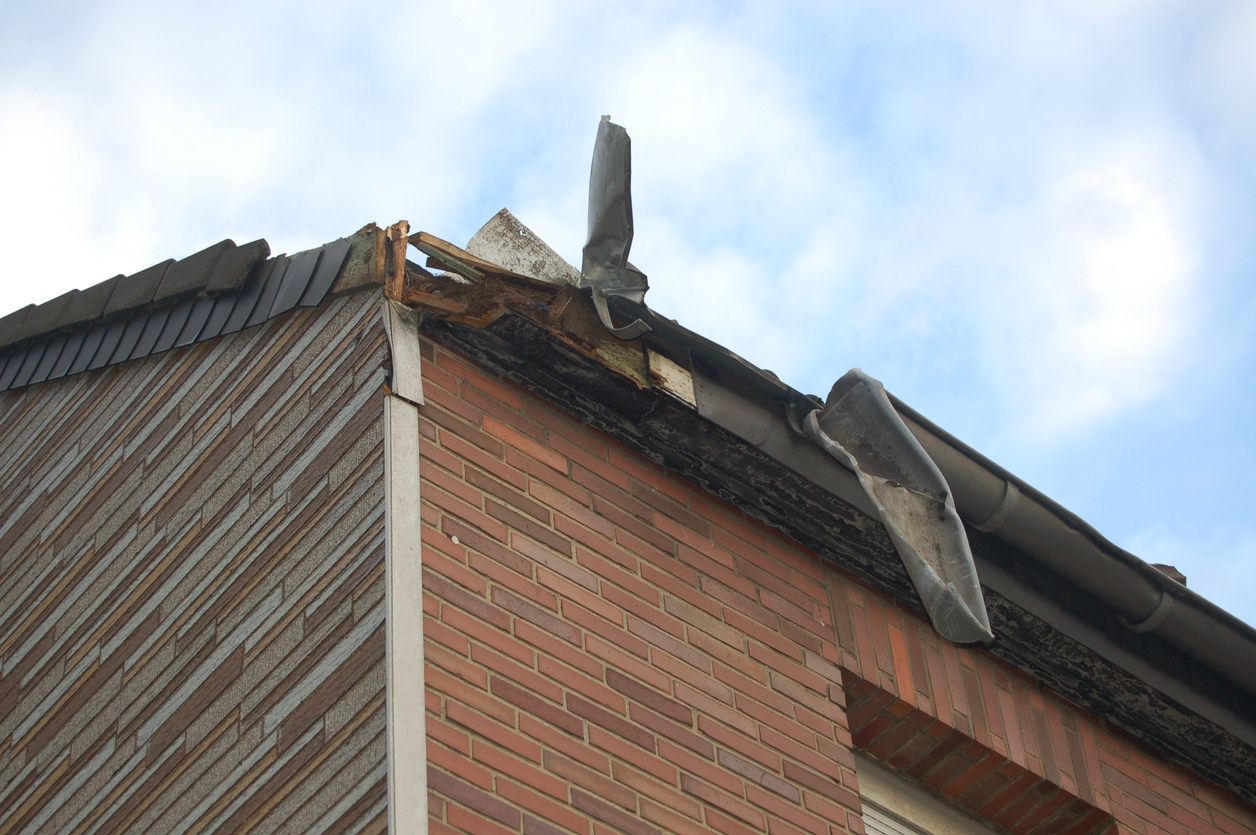
Recurring roof leaks are a telltale sign that the roof is due for replacement.
Constant leaks are one of the main signs that you need a new roof since they indicate widespread damage and deterioration. Excess moisture can lead to other issues if it goes unaddressed or isn’t properly repaired. Common signs of a roof leak include:
- Water spots on ceilings or walls
- Cracked/damaged shingles
- Missing shingles
- Wet roof decking
- Missing/damaged flashing or boot covers
Homeowners who notice any of these signs or suspect something is wrong will want to call a professional roofing company as soon as possible to identify the source and determine a path forward. Not only are roof leaks bad for the roof itself, but they can also cause more problems, such as damaged ceilings, stained walls, foundation issues, structural damage, or loss of personal property. Paying for frequent leaking roof repairs can add up, so it’s generally more cost-effective to opt for roof replacement when possible.
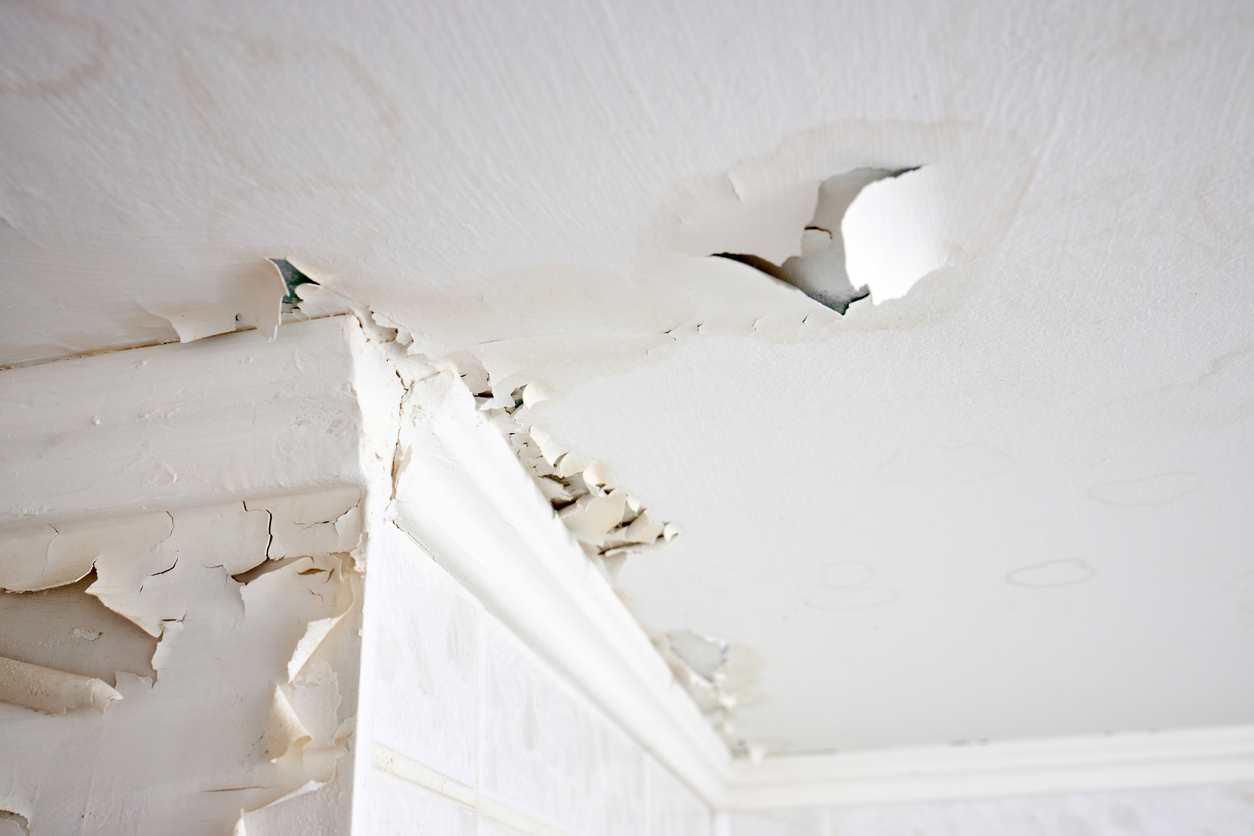
If a homeowner’s budget does not allow them to replace their entire roof immediately, key temporary repairs can prolong the life of the roof until a full replacement is financially feasible.
Damage that’s limited to a small area can be repaired at a more feasible cost while a homeowner builds up their savings for a replacement if one is needed down the line. For example, if leaks are actively causing damage to the home, patching the roof may be worth the cost of a temporary fix so the damage doesn’t lead to more issues.
Partial roof replacement is another repair option. This includes replacing a section of the roof instead of the entire thing. A roof may benefit from partial replacement if the damage only occurred on one side. In this case, a roofing company can come in and remove the damaged shingles and put a new moisture barrier and new shingles in to preserve the roof until it’s possible to pay for a full replacement. Keep in mind that temporary repairs will likely be an option only if no leaks have spread to the moisture barrier since water infiltration can cause mold growth if it is left unaddressed.
Reroofing is another way to extend the time until roof replacement is absolutely needed. This is the process of adding a new layer of shingles on top of an existing roof.
A home with a roof consisting of a single layer of shingles may be a candidate for reroofing. Not only is reroofing a quicker way to make a roof look brand new, but it’s also less expensive than a full roof replacement at an average of $5,000. The cost of reroofing depends on a number of factors, including:
- The size of the roof
- Slope
- Accessibility
- Labor
- Specialized equipment
- Location
- Materials
Reroofing is best for roofs with minor damage or aesthetic issues, but it isn’t typically advisable to reroof just one part of the roof since the reroofed section will look noticeably newer. It’s important to note that if there are already two layers of shingles then reroofing is not likely to be a feasible option. Also, if it’s necessary to repair the roof deck, this constitutes a full replacement instead of a reroof because the shingles will need to be removed in order to access the space underneath.
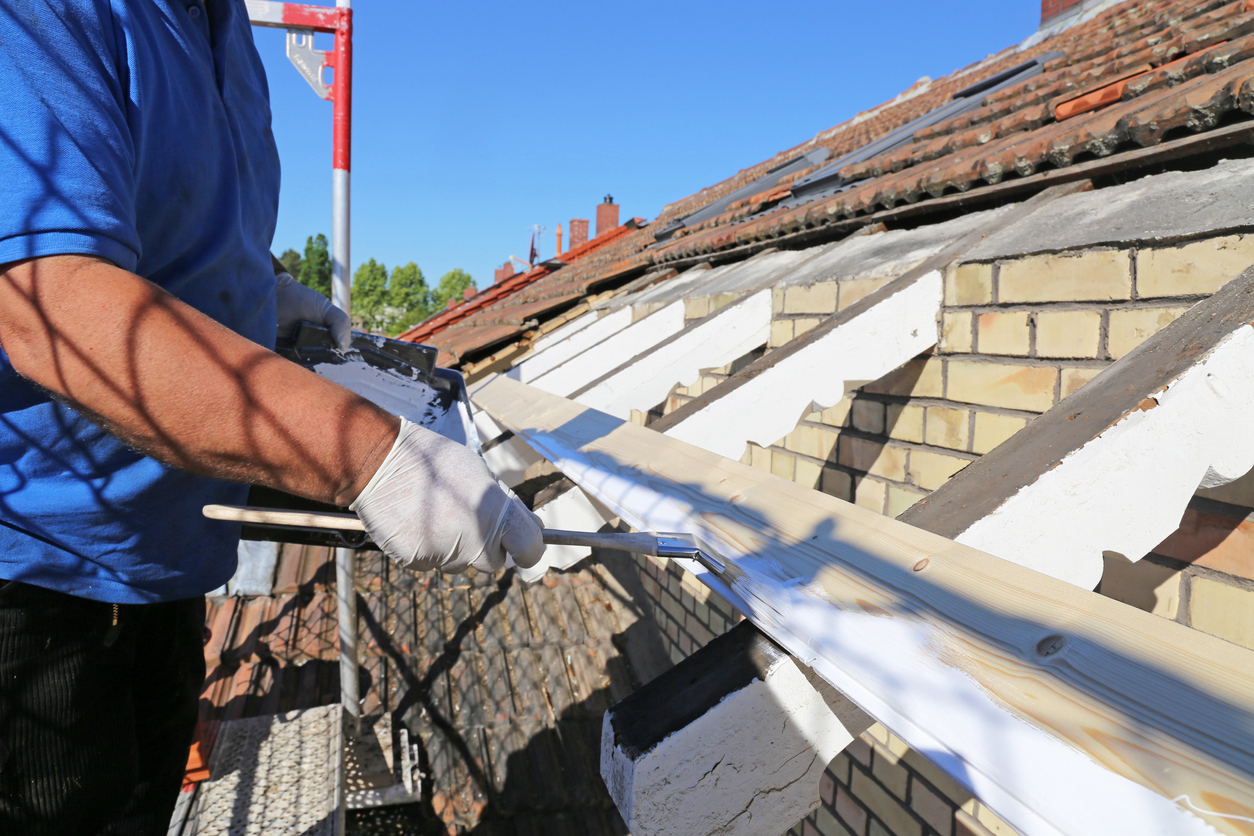
If the roof sustained severe damage from a hurricane or tornado, prioritizing repairs may be wiser than total roof replacement until the storm season ends.
Although it may be tempting to bite the bullet and put a new roof in, it’s generally best to wait until after the storm season ends to avoid putting those brand-new shingles at risk. The last thing a homeowner wants is to have their entire roof replaced, only to have it damaged by another storm a few weeks later. Roof replacement can also take several days, and if the area is still experiencing severe weather this can delay the process further. But putting off replacement does not necessitate leaving the roof vulnerable in the meantime. If patching the roof or having a leaking roof repaired is an option, it may be a good idea to go that route first until it’s possible to consider having the roof replaced. In some cases, roof leaks may be covered by homeowners insurance if they are the result of a storm or an accident.
Homeowners who are able to immediately opt for roof replacement may save more in the long run, as a brand-new, energy-efficient roof can significantly reduce energy costs.
Roof replacement costs can run anywhere from $5,727 to $12,418, which can seem like a lot to fork over up front. However, part of the upside to having a new roof put in is that the materials used now are much more energy efficient. A brand-new roof will provide the home with better insulation, keeping heating and cooling costs down. This is especially important for those who live in a warm climate, since some materials can now be coated in a pigment that reflects the invisible radiation of the sun. So while there may be a high cost associated with having the roof replaced, lower energy bills could lessen everyday costs in the long run.
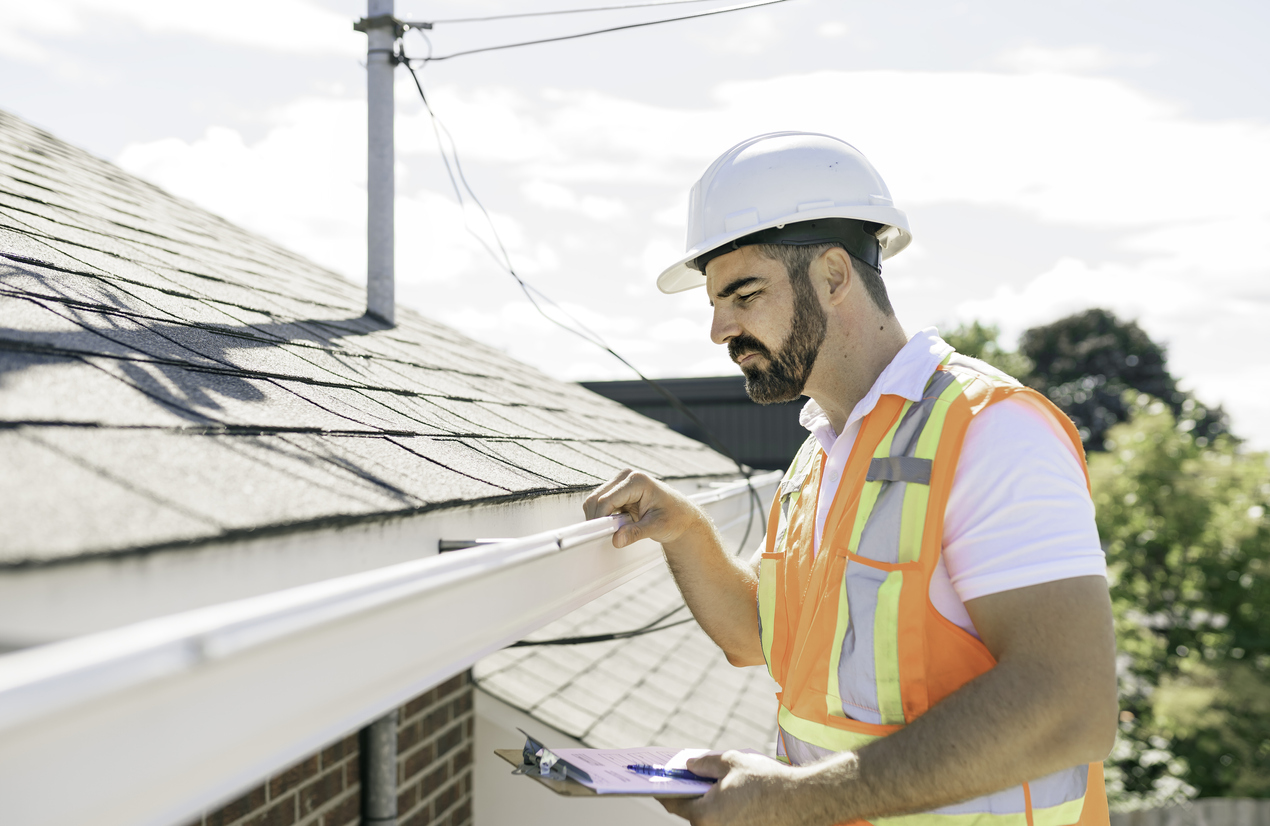
If it’s still unclear whether a roof needs repair or replacement, it may be worth scheduling an inspection with a local roofing company.
Most homeowners are not roofing experts, which is why it can be helpful to consult one of the best roofing companies to perform an inspection. A roofing company will be able to identify everything from minor hail damage to any leaks or holes that either need to be repaired or could qualify the roof for an entire replacement. Roof inspection costs can fall anywhere between $120 and $321, depending on the size of the roof and whether the inspection is physical or performed with a drone or infrared technology. Physical inspections are generally the least expensive, while infrared inspections can cost as much as $600 due to the advanced technology. No matter which route a homeowner chooses, a roof inspection will help them understand whether a few small repairs can extend the roof’s life or if the roof needs to be replaced.
Purchasing a home warranty policy that includes roof coverage can help reduce future repair costs.
Although a homeowners insurance policy may cover a roof replacement in the event of a major storm or other damage to the roof, it likely won’t cover repairs for wear and tear that occurs over time. This is where a home warranty policy comes in. Depending on the type of policy a homeowner purchases, a home warranty may cover the roof as an add-on service or as one that’s included in the policy as a whole. It’s important to be thorough in the search for a home warranty policy that provides the roof coverage a homeowner desires for a fair price. American Home Shield and Choice Home Warranty have some of the best home warranties for roof coverage on the market.
For those who are unfamiliar with how a home warranty works, homeowners pay an annual fee for the home warranty policy, then a previously determined service fee for a contractor to make any covered repairs. These fees typically amount to much less than what a homeowner would pay for repairs without the warranty.

